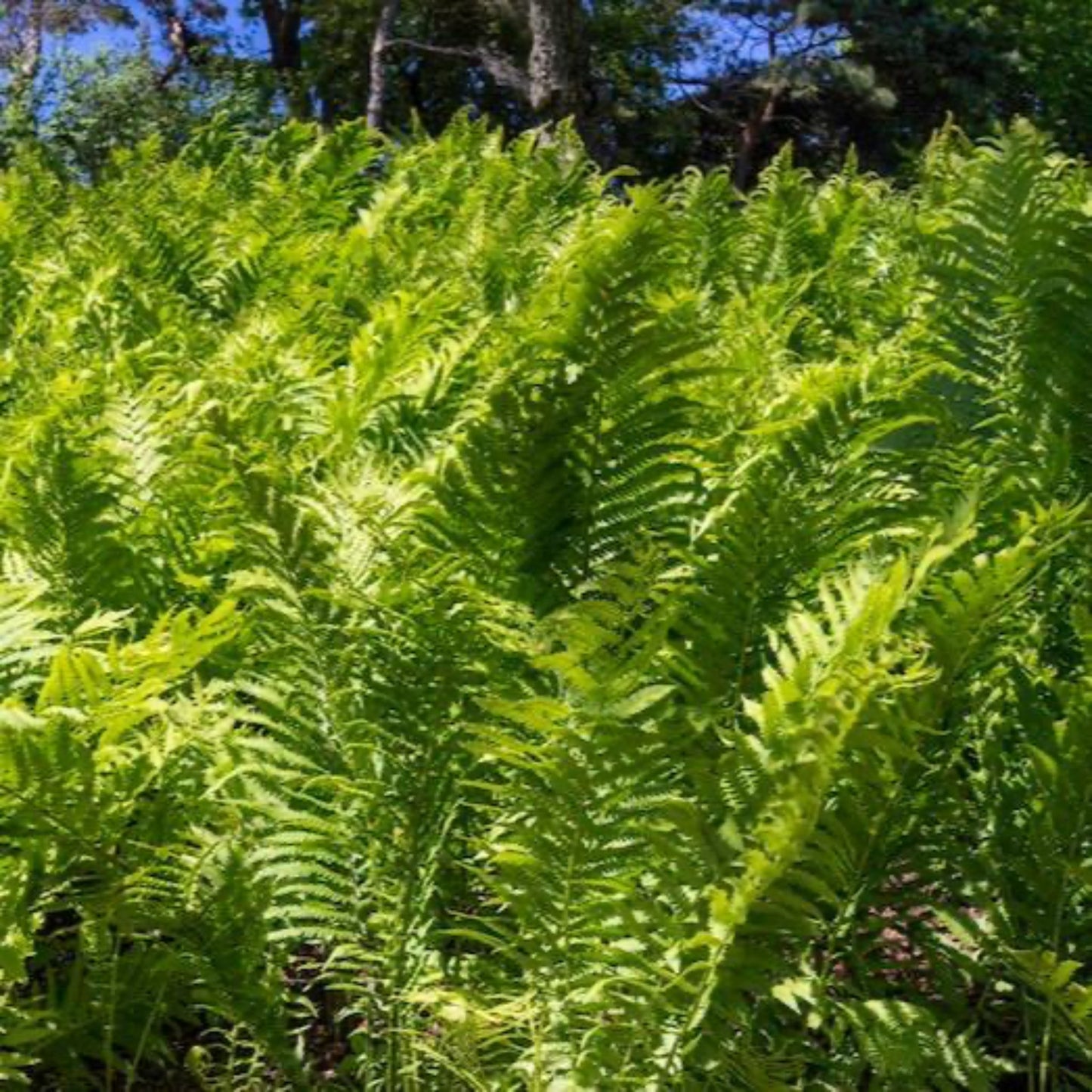Ostrich Fern
Ostrich Fern
SKU:PER-FER-OST-NA-1G
Ostrich Fern: A Timeless Touch of Lush Greenery
Looking to add a classic, woodland vibe to your garden? The Ostrich Fern is the perfect choice! Known for its striking, feathery fronds that can reach up to 4 feet in height, this fern brings an elegant, prehistoric feel to your landscape—no dinosaurs required.
Why You'll Love the Ostrich Fern
- Bold and Beautiful: The arching fronds create a striking visual impact, resembling the plume of an ostrich, hence the name. It's a perfect statement plant for shady spots.
- Low Maintenance: Once established, Ostrich Ferns are tough and thrive with minimal care, making them ideal for gardeners who want to enjoy lush greenery without constant upkeep.
- Shade-Loving Wonder: Ostrich Ferns love partial to full shade, making them a great choice for those tricky, low-light garden areas.
- Moisture Lover: They thrive in consistently moist soil, perfect for areas near ponds, streams, or rain gardens.
Where to Plant
The Ostrich Fern is excellent for woodland gardens, shaded borders, or naturalized areas where it can spread freely. It also shines in container gardens—bring a piece of the forest to your patio or balcony! Just make sure to keep the soil damp and place it in a shaded spot.
Get Your Own Slice of Lush, Green Paradise
Transform those shady, damp corners into a lush haven with Ostrich Ferns. Hardy in USDA zones 5-9, they’ll come back year after year, growing even more majestic with time.



Product Details
-
Product Category
Perennials
-
Product Subcategory:
Ferns
-
Botanical Name:
Matteuccia struthiopteris
-
Does Not Ship To:
AZ, OR
-
Mature Height:
3-4 ft.
-
Mature Width:
3-4 ft.
-
Growing Zone:
5-9 outdoors
-
Indoor Growing:
-
Sunlight:
Indirect Light
-
Growth Rate:
Fast
-
Harvest Time:
-
Bloom Time:

Planting Directions
<h2>How to Plant and Care for Ostrich Fern</h2> <p>Ostrich ferns are popular for their lush, feathery fronds that thrive in shaded, moist areas. These ferns are hardy and low-maintenance, perfect for woodland gardens or shady borders.</p> <h2>Planting Instructions</h2> <ul> <li><strong>Location:</strong> Choose a site with partial to full shade. Ostrich ferns prefer consistently moist soil, so avoid dry, sunny areas.</li> <li><strong>Soil:</strong> Plant in rich, loamy soil that is well-drained but retains moisture. Amending the soil with organic matter like compost will improve its moisture-holding capacity.</li> <li><strong>Spacing:</strong> Space plants 2 to 3 feet apart. These ferns can spread by underground rhizomes, so give them room to grow.</li> <li><strong>Planting Depth:</strong> Dig a hole deep enough to accommodate the root ball. The crown (where the fronds emerge) should be at or slightly above the soil level.</li> <li><strong>Mulching:</strong> Add a 2-3 inch layer of mulch around the base to retain moisture and keep the roots cool.</li> </ul> <h2>Watering Instructions</h2> <ul> <li>Water immediately after planting to help settle the soil around the roots.</li> <li>Keep the soil consistently moist, especially during the first growing season. Water deeply once or twice a week, depending on rainfall.</li> </ul> <h2>Ongoing Care</h2> <ul> <li><strong>Fertilizing:</strong> Apply a balanced, slow-release fertilizer in early spring. Avoid over-fertilizing, as too much nitrogen can weaken the plant.</li> <li><strong>Pruning:</strong> Remove dead or damaged fronds to encourage healthy new growth.</li> <li><strong>Winter Care:</strong> These ferns are hardy, but you can add an extra layer of mulch to protect the roots during harsh winters.</li> </ul> <p>Ostrich ferns will naturalize over time, creating a beautiful, dense ground cover in shady areas.</p>

FAQs
<h2>Ostrich Fern FAQs</h2> <h3>1. What is an Ostrich Fern, and why is it popular?</h3> Ostrich Fern is a stunning, vase-shaped fern known for its tall, feathery fronds that resemble ostrich plumes. It's popular for its lush, tropical look, making it a great addition to shade gardens, woodland areas, or as a backdrop for other plants. This fern is also valued for its hardiness and ability to thrive in damp or moist conditions, adding a natural, forest-like vibe to your landscape. <h3>2. Where should I plant an Ostrich Fern?</h3> Ostrich Ferns thrive in shady or partially shaded areas with consistently moist soil. They’re perfect for spots that stay damp, such as near ponds, streams, or in woodland gardens. Ensure the soil is rich in organic matter and well-drained to keep the fern healthy. Avoid planting in full sun, as this can cause the fronds to wilt or burn. <h3>3. How do I care for an Ostrich Fern?</h3> Ostrich Ferns are low-maintenance once established. Keep the soil consistently moist, especially during dry spells, as these ferns do not tolerate drought well. Mulch around the base to retain moisture and protect the roots. Prune away any dead or damaged fronds in late fall or early spring to keep the plant looking fresh. This fern is also deer-resistant, which is a bonus if you have wildlife concerns. <h3>4. Can Ostrich Ferns be grown in containers or indoors?</h3> Yes, Ostrich Ferns can be grown in large containers, making them suitable for patios or shaded outdoor areas. However, because they need consistent moisture and humidity, growing them indoors can be challenging unless you have a humid environment. A large, well-draining pot with rich, moisture-retentive soil is essential for container growth. Be sure to keep the fern in a shady spot and water it regularly. <h3>5. Can Ostrich Ferns be grown alongside other plants?</h3> Yes, Ostrich Ferns make great companion plants for other shade-loving species. They pair well with hostas, astilbes, and bleeding hearts, creating a lush, layered look in woodland or shade gardens. Their tall, airy fronds provide a soft contrast to plants with bolder foliage. Just be mindful of their spreading habit, as they may compete for space with less vigorous plants.




